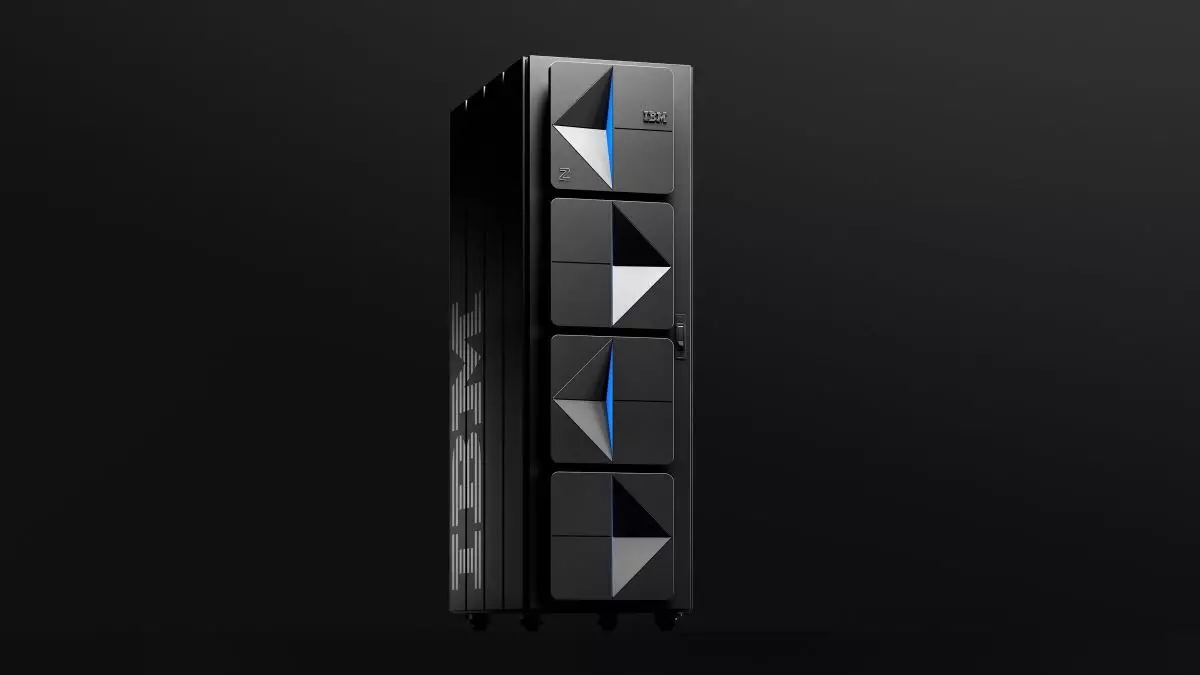In an era dominated by rapid digital transformation, it’s easy to overlook the robust infrastructure that has powered enterprises for decades. Enter the IBM z17, the latest iteration of IBM’s mainframe technology, which stands as a testament to the adage that old dogs can indeed learn new tricks. This groundbreaking mainframe is not just a relic of the past; it is a forward-thinking technological marvel, designed with AI integration at its very core. The z17 is emblematic of how traditional systems can evolve to meet the modern demands of artificial intelligence, thus ensuring their relevance in today’s increasingly competitive landscape.
The z17 isn’t merely a response to AI’s growing ubiquity; it is a proactive leap into the future. With a staggering processing capability of 450 billion inference operations per day—a 50% improvement over its predecessor, the IBM z16—the z17 redefines the limits of mainframe performance. Many might argue that using mainframes in the current digital age is counterintuitive. However, with 71% of Fortune 500 companies still relying on them, it’s clear that they are far from obsolete. The z17 reaffirms the mainframe’s role as a powerhouse for organizations that manage vast amounts of data and require unparalleled security.
AI-Centric Architecture
What sets the z17 apart from previous models is its architecture, conceived with AI at its foundation. This fully encrypted system features the high-performing IBM Telum II processor and supports over 250 AI use cases, ranging from generative algorithms to advanced AI agents. The focus on AI isn’t incidental; it’s built into the very DNA of this mainframe, allowing for the seamless integration of both software and hardware. Tina Tarquinio, IBM’s VP of product management for IBM Z, revealed that this project has been in development for five years. It’s fascinating to see predictions align with the current trajectory of AI, particularly after the transformative arrival of OpenAI’s ChatGPT in late 2022. Tarquinio’s insights reflect a keen understanding of the industry’s evolution, hinting at a revolution far beyond what most tech observers can foresee.
To further enhance its capabilities, the z17 is engineered to support up to 48 IBM Spyre AI accelerator chips initially, with plans to double that number within a year. This “headroom” strategy positions the z17 to accommodate future demands, making it an adaptive shield against the unpredictable nature of AI growth. As new models emerge and requirements evolve, the z17 is prepared to scale accordingly, blending agility with robustness.
Energy Efficiency: A Hidden Gem
Another impressive feature of the z17 is its energy efficiency, an increasingly vital criterion in today’s tech landscape where sustainability dominates discussions. Tarquinio highlights that the z17 can achieve AI acceleration increases up to seven and a half times more efficiently than its closest competitors, consuming substantially less energy. This discrepancy is not just a talking point; it is a genuine competitive advantage that allows organizations to be both environmentally conscious and technologically advanced.
Energy efficiency is no longer just a bonus; it’s a necessity. Companies worldwide are facing mounting pressure to curb their carbon footprint, and the z17 provides a sustainable solution without sacrificing performance. By fostering an innovative environment where energy efficiency and processing power coexist, IBM not only sets a benchmark in the industry but also responds to the growing demand for corporate responsibility in technology.
Looking Ahead in AI
As the z17 prepares for its general availability launch, the implications of its capabilities resonate throughout the tech ecosystem. IBM’s intention to create a flexible, AI-focused mainframe demonstrates its commitment to innovation and leadership. The z17 is not merely a product release; it symbolizes a renaissance for mainframe technology in an AI-centric age.
As organizations embark on their AI journeys, IBM’s z17 serves as a central pillar in the burgeoning civilization of intelligent computing. The potential applications are vast and largely still undiscovered, bridging the gap between established technological frameworks and the burgeoning landscape of AI. While the future remains uncertain, the z17 positions IBM as an industry frontrunner, inviting enterprises to rethink their operational strategies in light of AI’s transformative potential.

